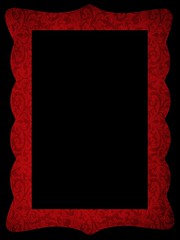The two quilts that I got to work with were a traditional 'Birds in the Air' block design and one with a 'Double Nine Patch' block with some big blocks of white. Having more negative space to work with opened up some interesting possibilities on the 'Double Nine Patch'.
I received the book in the mail this week and to my great delight...Double Nine Patch is featured on the inside cover both front and back!

Just to be listed with these other famous names in quilting makes me giddy. Pam Clark, Margaret Solomon Gunn, Judi Madsen, Sue Nickels, Sue Patten, Sally Terry, and Judy Woodworth. I've taken classes from four of these ladies and have admired their work these past five years of my professional quilting journey.
Here is a bit more about my approach to the quilting on the two quilts.
'Birds in the Air'
Quilting on a two color quilt, the challenge is what color thread do you use.....using white thread on red will stand out and using red thread on white will really stand out. I chose to use So Fine! 50 wt. and put the stitches per inch up to 12 --the highest of the standard settings on my Gammill.
As I looked at the overall quilt, the small half square triangles (HSTs) kept appearing on the diagonal grid like you're looking through bathroom glass. So, I chose to put echoed lines. The lines that followed the piecing lines went smoothly using a ruler to help the diagonal. The entire quilt was stabilized stitching along those piecing lines.
And the quilt continues to live on...when a call came from the International Quilt Festival for red and white quilts to be part of their 40th celebration (Ruby is the color for 40 apparently) Linda, author of the book, submitted this particular quilt along with 5 others from the book and they were all accepted. So, it will be part of the
Ruby Jubilee: A 40-Year Celebration Exhibit
at Houston Quilt Festival 2014! Whoo Hooo!!
It will also travel as part of special exhibits that AQS will feature in their shows in 2015. So, I hope you'll attend at least one and give it a look!

I usually start on a custom quilt with my vinyl sheet and some drawing on top of the quilt to get an idea for the scale and how an area might look with a motif and fill.
The basic structure of the quilting goes down first and I try to do as much continuously across the quilt as possible.
Below are a series of photos taken during the quilting process.
Only fills added to the edge of the center.
The initial lines stitched didn't seem enough, so I added more to fill some areas and let others pop.
At the border I decided to just extend the basic grid and straight line work that was done in the center, but not do any further fill work. This was a much labored decision. Not adding the fills in the border seemed to be effective by letting the center be in focus and the outer part not so much with just the grid structure being quilted.
I chose to put off center, four blocks stitched in RED. It didn't create as strong of an effect as I thought it might, but it is there none the less. The red blocks made me very nervous because the red is such a high contrast on the white fabric. The white thread goes easier on the red, but is still a bit unnerving when stitching it.

'Double Nine Patch'

I started with drawing a grid pattern, on point, in line with the nine patch on point squares. Then started stitching the cathedral window or orange peel shape using the grid pattern drawn or the actual nine patch piecing as registration marks.
Here are images along the way. Pay particular attention to how adding density to specific quilted areas changes what your eye sees. Your eye sees what is NOT quilted.

Here is how I pass from left to right.


and then come back from the right to the left.

Detail of what happens at the 9 patch pieced block.
Then I came back through the orange peels to do the flower fill that mimics the grid of the 9patch blocks but through the center of the white block left in the middle of the red grid area.
I decided this was not enough at this point, especially when I realized who the other quilters were that had been asked to do quilts for this book. So, the other 'empties' got two different treatments, either a swirl or a dense fill of pebbles. This provided both a different relief and an alternate design. The pebble fills were around the junctions of 9patch blocks and the swirls were the others.
At the time I was able to do some continuously because they were touching so could just move to the next one, but I had to hop into new spots several times. I wondered if I had it to do again would I change anything? Likely just know my fill strategy and after the main orange peels were completed. Go back and do continuous fills with each one marked with a different pin or something so that I could remember what design I was doing in each.
I've ordered quite a few copies of the book for my shop, so if you're interested in buying one, stop by or leave a comment that you'd like one shipped to you and I will paypal you an invoice, be sure to indicate if you'd like it autographed or not. MSRP of the book is $22.95. All orders taken by Oct. 3 will receive free shipping and tax.

































